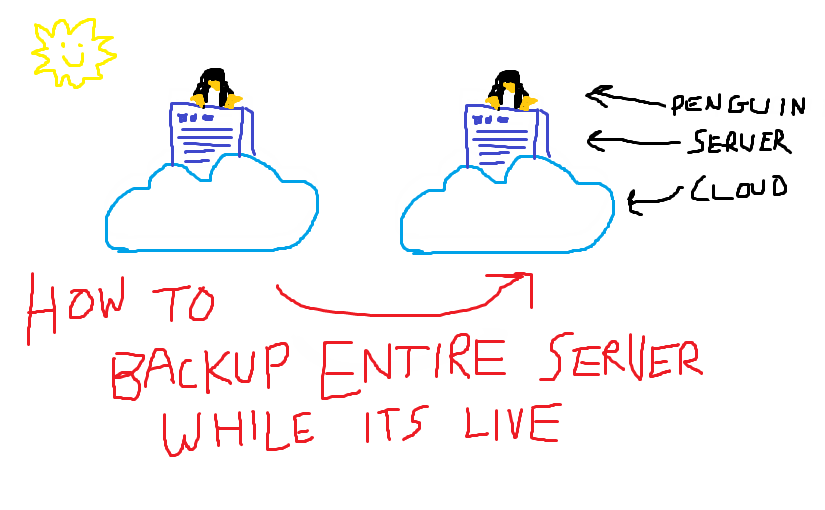Email spam is the bane of all our existences. On the other hand, being able to send (legit) emails to customers and actually have them land in inboxes is absolutely essential to run just about any business. With that in mind, a variety of Email Blacklists came about and are maintained by various organizations, to help ESP’s sort out the good senders from the bad. But what happens when a particular Email Blacklist goes from being a force for good, to rather blatant monetary extortion? Continue reading Email Service Providers – It’s Time to Stop Using UCEPROTECT
Category: Linux Admin
Review: LunaNode Cloud Hosting
After having a bad experience with Web Hosting Canada (read my review here), I decided to try LunaNode for the first time. I’ve been very happy since.
LunaNode is a good, no-nonsense cloud host. They have everything I need, and (so far) no bullshit. From the time I signed up my account and ordered my first server, it was deployed and live within maybe 2 minutes. They have 3 tiers of plans — General Purpose, Memory-Optimized, and Compute-Optimized, each with different levels of resources available. They have all the common Linux distros available as templates. (No Windows Server is offered, but if needed it seems you could upload an image.) In a nutshell, all the standard stuff is there.
Review: Web Hosting Canada (whc.ca)
I have several projects based in Canada, and as such I’ve had opportunities to try several different Canadian web hosts. Recently I gave Web Hosting Canada (whc.ca) a try. It was a terrible experience. The worst of any Canadian host I’ve tried so far.
In fairness, I didn’t get very far with WHC. I couldn’t.
How to DDoS attack a site protected by CloudFlare
Important note: this post is NOT meant to encourage anyone to carry out a DDoS attack on any website. Rather it is my tongue-in-cheek way of exposing a major flaw in the popular Cloudflare service, in hopes they will take this shit seriously and actually reform their business practices. If you, dear reader, ever DDoS a site for real, I hope you die in a fire.
I use Cloudflare on several sites — for DDoS protection, as a Web Application Firewall, and also for their CDN. I have sites on both free and paid plans with them. Up until now, I thought Cloudflare was a great service — little did I know how easy it is to defeat the entire purpose of using them.
Or to put it another way: Cloudflare is great — until they decide to fuck you over.
Here’s how you defeat Cloudflare:
Continue reading How to DDoS attack a site protected by CloudFlare
Review: Canadian Cloud Hosting (CACloud.com)
Programmer Bear is back online… no thanks to Canadian Cloud Hosting.
Trying new cloud providers has become something of a pastime for me, over the last couple years. In that spirit, last September I moved this very site (programmerbear.com) to a server hosted at Canadian Cloud Hosting (CA Cloud). In the end, I wasn’t very impressed. Now that I’ve finally gotten around to moving this site somewhere else, I feel free to write honestly about my experience at CA Cloud.
Continue reading Review: Canadian Cloud Hosting (CACloud.com)
Review: Cloud A – Canadian Cloud Server Hosting
Recently I had to setup a web server for a client using Canadian cloud hosting provider Cloud A. This was my first time using them, so for anyone else who may be considering Cloud A, I thought I’d share my experience with them so far. (Overall, it’s good…)
Continue reading Review: Cloud A – Canadian Cloud Server Hosting
How To Backup Your Entire Server or VPS While It’s Running Using Linux Hot Copy
I run a few cloud servers at Linode and Digital Ocean which host stuff for clients. Although I have automated backups in place to backup my clients’ data, I always worry about some catastrophic situation where the entire server goes down and, God forbid, needs to be re-built from scratch.
While places like Digital Ocean advertise you can spin up a new Linux server in a matter of seconds — and no doubt you can — what they don’t tell you is how long it takes to configure that server for real-world use. Depending on how many packages, libraries, and other software you need to install, and all the configuration that goes along with it, you could be looking at 2, 3, or even several hours to rebuild a server. To many of my clients that kind of downtime would be absolutely detrimental (and not too good for my business, either).
Continue reading How To Backup Your Entire Server or VPS While It’s Running Using Linux Hot Copy



